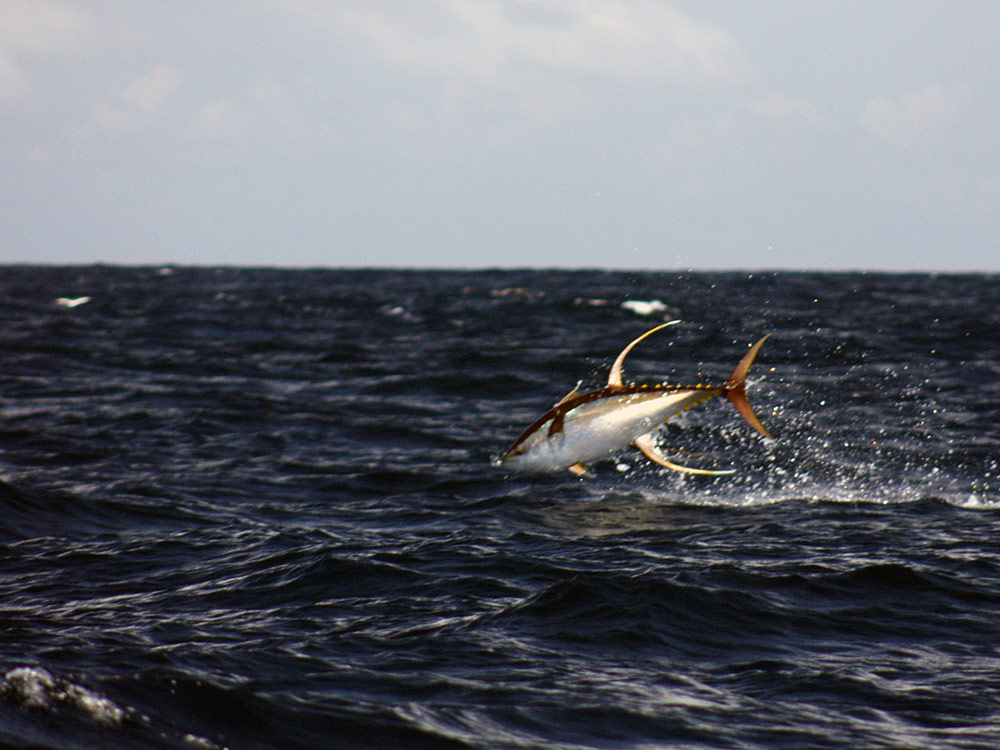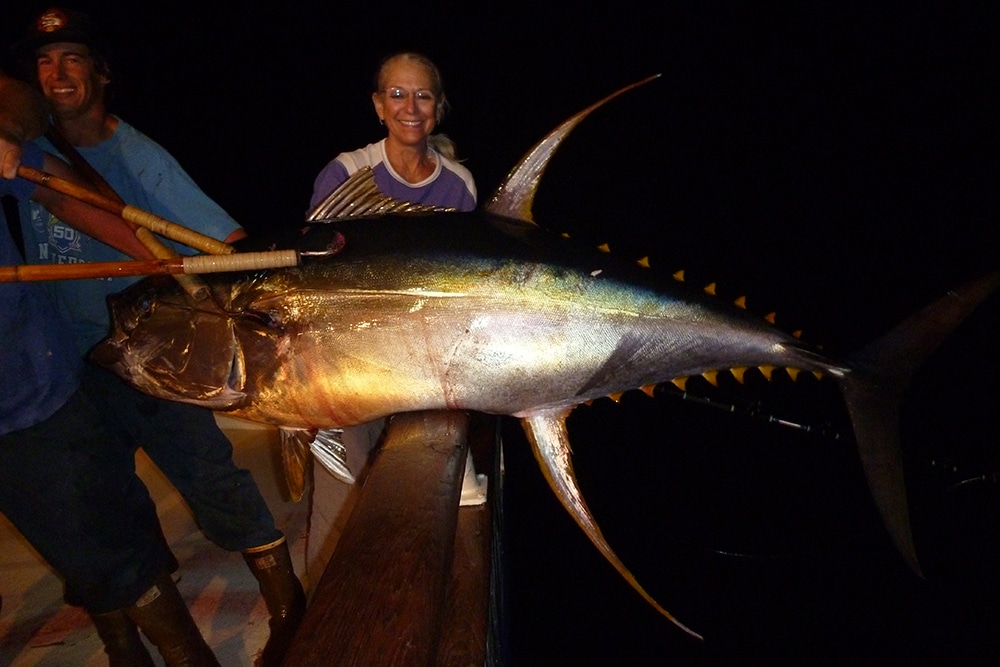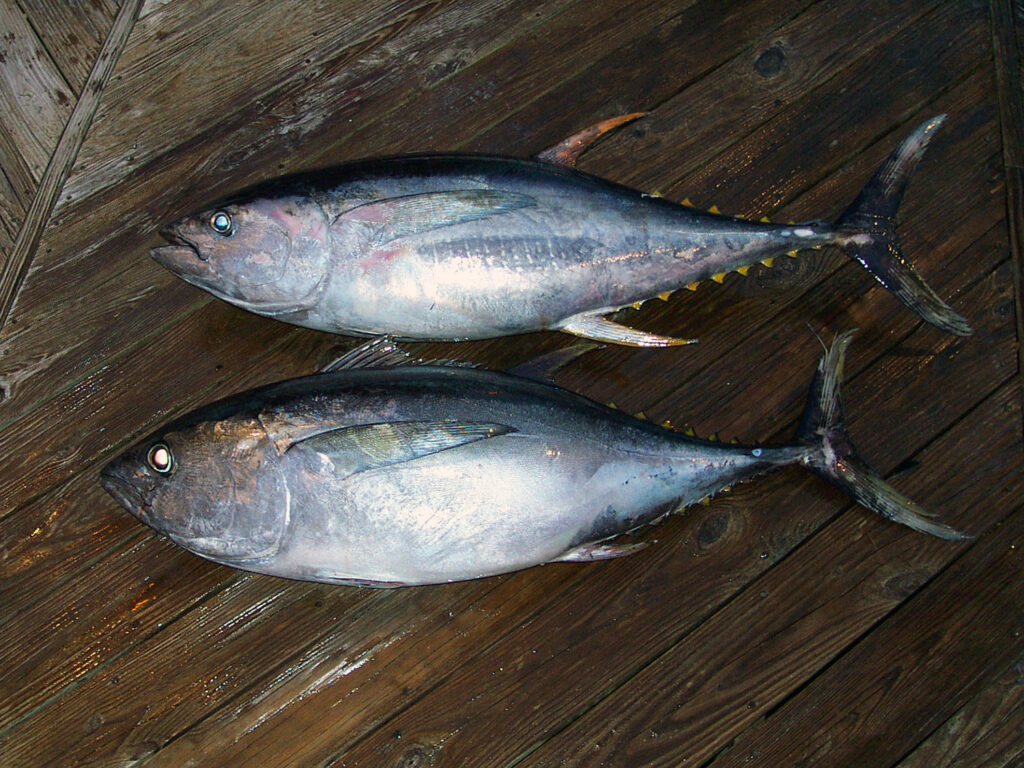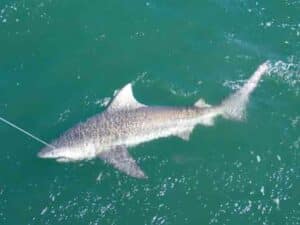
Do you have a photograph of a fish you can’t identify? If so, we’re up for the challenge, and would welcome the opportunity to share your photo and its ID with an international audience of enthusiasts. (Whether published or not, we will personally respond to every inquiry.) Email your jpgs, as large/hi-res as possible, to: fishfacts@sportfishingmag.com.
Some Fish Facts fans have been wondering about the difference between a “standard” yellowfin tuna and an Allison tuna. References to both names are commonplace. For example, Tom Pytel writes, “I often notice in photos some yellowfin tuna with very long anal fins. I’ve caught yellowfin to 100-plus pounds, but none has had those long fins. Is this strictly associated with size or perhaps sex, or some other factor?”
So Fish Facts thought it should, once and for all, clarify this tuna teaser. To cut to the chase, there is no difference: We’re talking about one species, Thunnus albacares.

But indeed, some yellowfin have clearly elongate second dorsal and anal fins. It’s the only species of tuna that exhibits this variation in fin length, says John Graves. Graves, for years chair of fisheries science at the Virginia Institute of Marine Science, is one of the world’s leading tuna and billfish experts. He notes that the longer fins occur in only larger yellowfin. “In the extreme, the length of these fins can be greater than 40 percent of the total length of the fish. Some refer to these Allison tuna.”
Graves says this occurs independent of the fishes’ sex, but not of the location. “There’s a lot of geographic variation in the length of these fish.” For example, he says, across the Pacific, the relative lengths of yellowfin second dorsal and anal fins tends to increase from east to west.

In scientific terms, this variation in fin size for years “created havoc with the taxonomy of yellowfin tuna,” he says. As many as seven species of yellowfin tuna have been recognized, based on fin size. “It was only in the mid 1960s that the various geographic populations were combined into a single, circumglobal species.”
So while some anglers will remain convinced they’ve caught an Allison tuna, Fish Facts fans will know the truth: It’s a yellowfin tuna, no matter the length of its fins.








